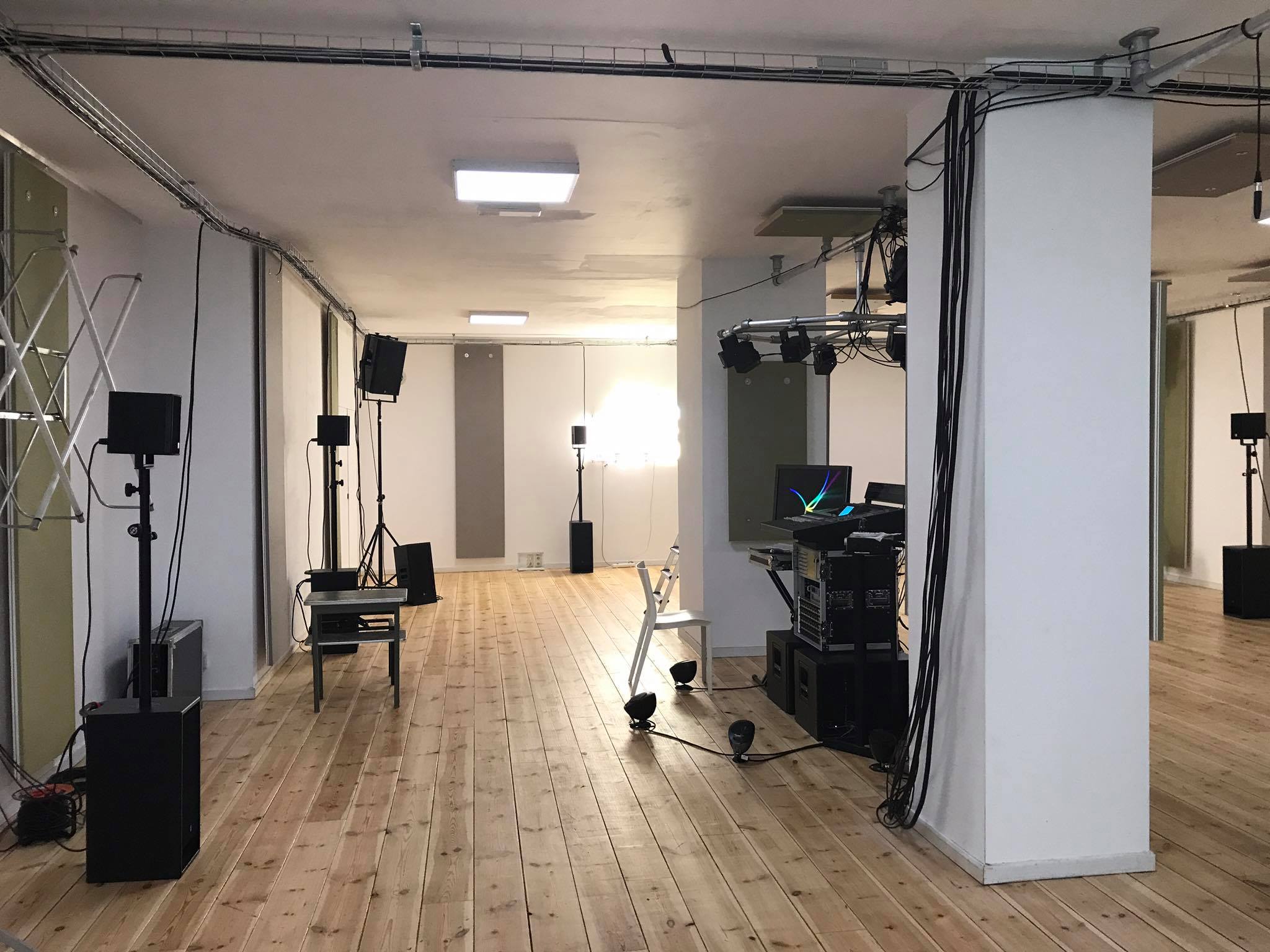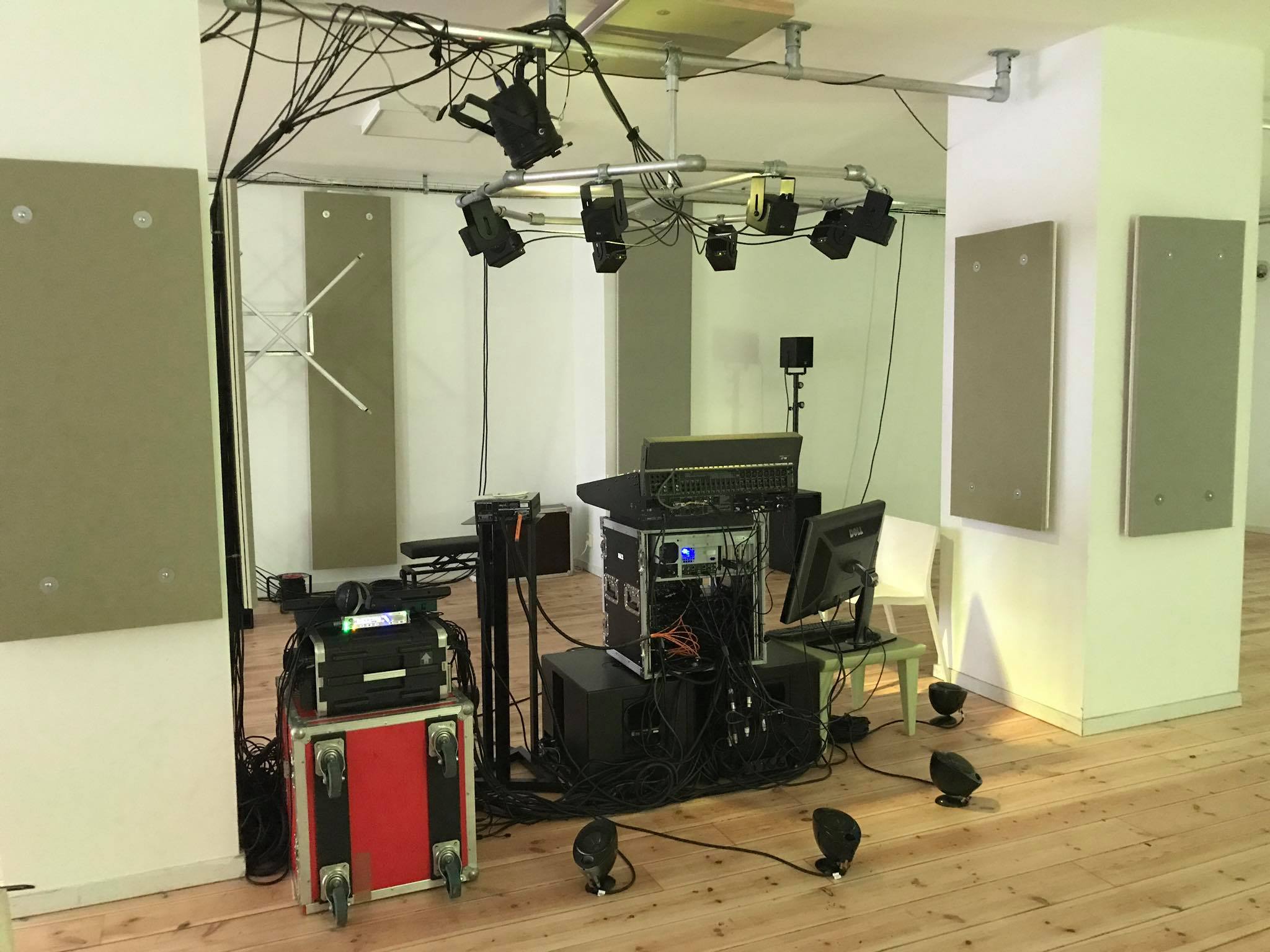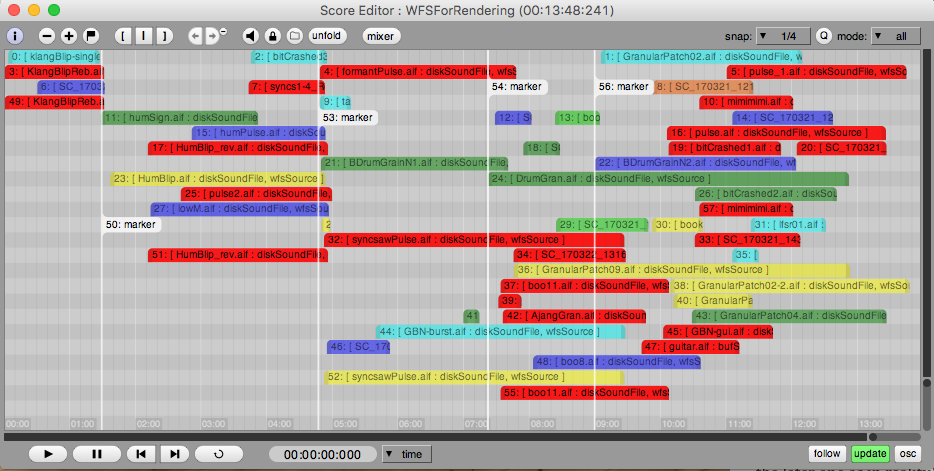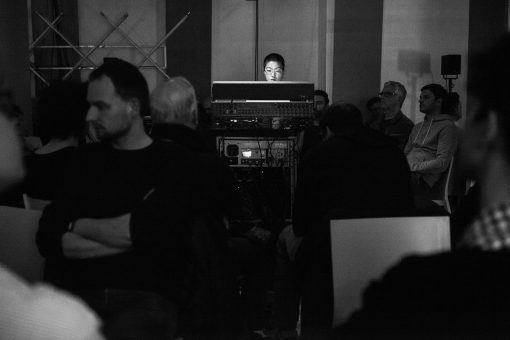
Rough view of Azimuth #3 setup
Few months ago, I was invited to present a piece for 32 channel system of Azimuth foundation. Azimuth foundation(http://www.azimuthfoundation.net) is an organization of musicians/composers that organize concerts with their multichannel system that its configuration varies every edition. This time, they offered 32 channels: 8 circle outside, 4 quadra up and down at the corners of the hall, 8 circular center up, and down.
Then I thought I must write a new piece for it, although I didn’t have so much time left at the moment. I didn’t want to re-arrange an old piece that is written for a different system as this specific configuration can offer a number of interesting ideas to make a sound journey.
As I have been writing a lot for the WFS system (192 loudspeakers), my brain worked automatically the way I used to when writing for the WFS, which… could be described like : considering the whole space as an opened one, and creating my own ‘drawings.’
It wasn’t too long to realize that I was wrong in my approach, as this system is quite a different one. It is more like a ‘interwoven’ space that is made with a mixed up of different system(quad+multiple octa, and even stereos), accordingly different capacities. I couldn’t say that it is for a diffusion, nor for a spatialization. Rather a mixture of those two, especially with the setup in the center, speakers directing toward the audience, from up to down.

The speakers in the center, 8 up and 8 down toward the audience
The idea had to follow up of the ideal of the speaker setup. Then my composition should have to make sense as well. Then I thought it will be a good idea to have two specific ‘motions’ work together: 1. Some sound sources that are alive, moving, and having strong identities. 2. Clouds that are diffuse and support those main actors.
Previously, actually long time ago, I wrote a series of pieces for the WFS system, called ‘Enfolding Plane(I and II).’ Those are the pieces that I composed in order to study fully what the WFS could do with a variety of different spatial figures, of course with different sound materials. I thought it might be a good idea to add another piece into the series this time, so that I put ‘Enfolding Plane III’ title and gave a subtitle into it, which was ‘Punky Pulse Pool.’
I imagined a giant pool that several selfish pulse-character sounds are trying to occupy the space. It is rather a political fight than a violent one (as sometimes it could end up like that). I created a simple theme with pulse wave that has a small gesture, and started manipulate it into a variety of ways (I called it ‘variations’ in my program note). I had over 200 babies that came out from the theme. I was thinking of categorizing them first, then I thought, why not just trying to listen to them all together. Just out of curiosity.
I randomly placed (threw) all the sound files within 15 minutes time, listened to them, and then I hear a giant mass. (That was the moment that I made the title.) From there, without actually moving the sound files in time, I started cut them off. In other words, I started sculpting it, revealing what’s hidden, and sometimes hiding what’s representative. During this process, I also made decisions of where each sounds or parts of sounds should go and do. Are they staying? Moving? Diffuse? Heavy? Light? Slow? Fast? Overwhelming? Passing by? Supporting? Leading? Timid? And so on.

Localization of sounds is indicated with different colors
After that I moved the result into the WFS Collider, and then I gave them color marks based on my decisions in order to remember and to create the final tracks, and made note of it. This process took quite long. Longer than creating all the sounds.
The tricky part was the fact that I can’t test this in my studio. I wish I had 32 channels myself to try it out but well, I had to use fully my imagination.
Then I made a virtual setup that is similar to the original with the WFSCollider, the software for the WFS system, which, as I mentioned earlier, allows you to create your own space. Then I could have a bit of perspectives how it might sound.
Always very exciting to go for the first tryout with the actual system. This time wasn’t an exception. The most difficult part is to balance all the speakers as they are with different capacity/character. As it was the first time of listening, I spent most of the time making the balance.

Azimuth #3 Concert (22,Apr,2017)
The performance went well. A number of audience of course make the sound quite different, but it was alright. The difference between the WFS and this setup (or course there are many different aspects but if I mention as a biggest part of it) is how the chunk(mass) of sounds is heard; WFS is very good with a sound mass with vivid individuals, while this setup can’t give that amount of detail. However it forces you with much power. It moves you up and down, back and forth!
One of the interesting feedbacks from the audience: “I could feel that I am taking a shower at the giant water fall, but the water came from the bottom, not from the top!”
I feel grateful to have a wonderful experience, not only to compose but also to listen to the system. Multichannel exploration is never boring. There are still a lot to find, reveal. Discovering hidden spaces beyond our imagination.
